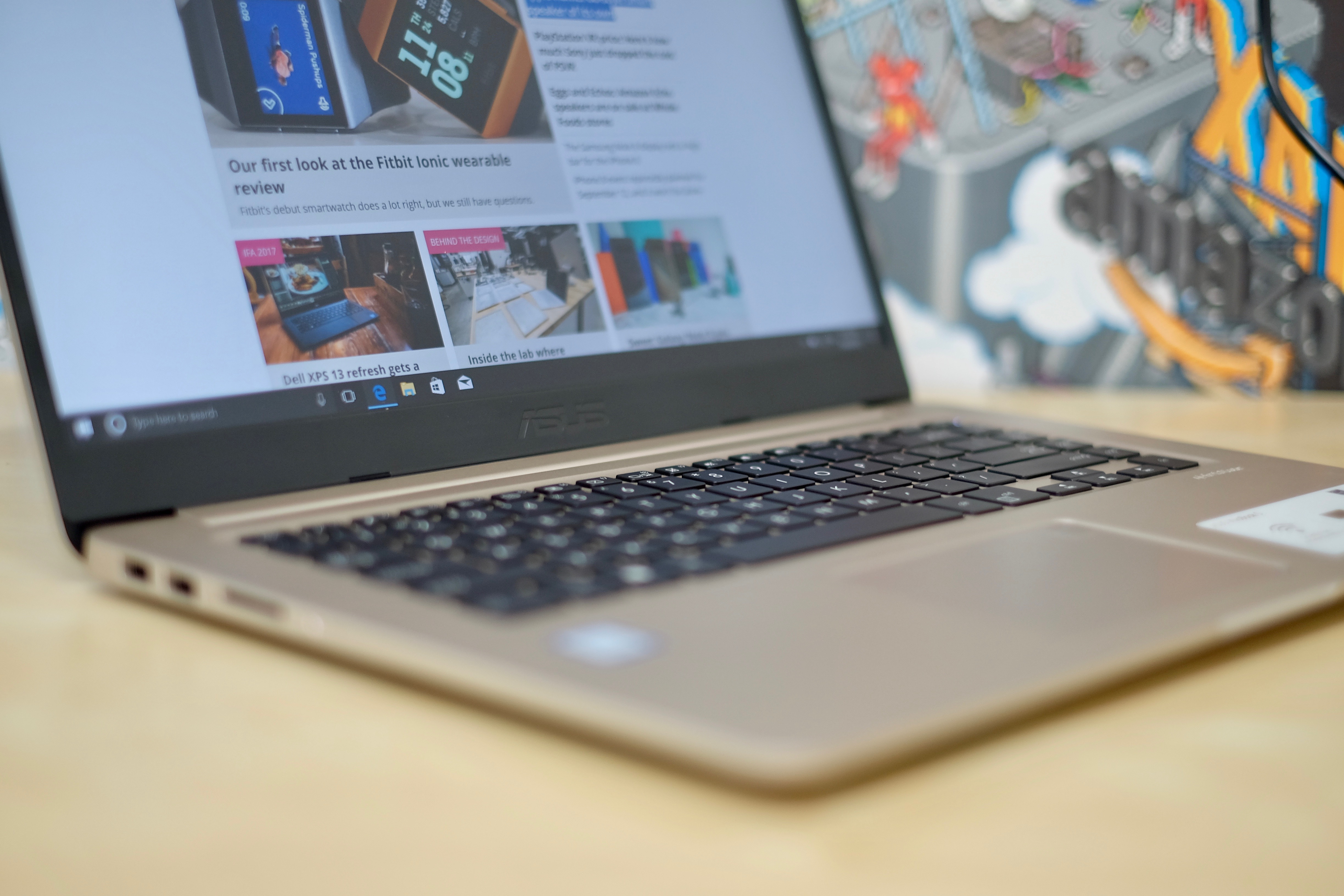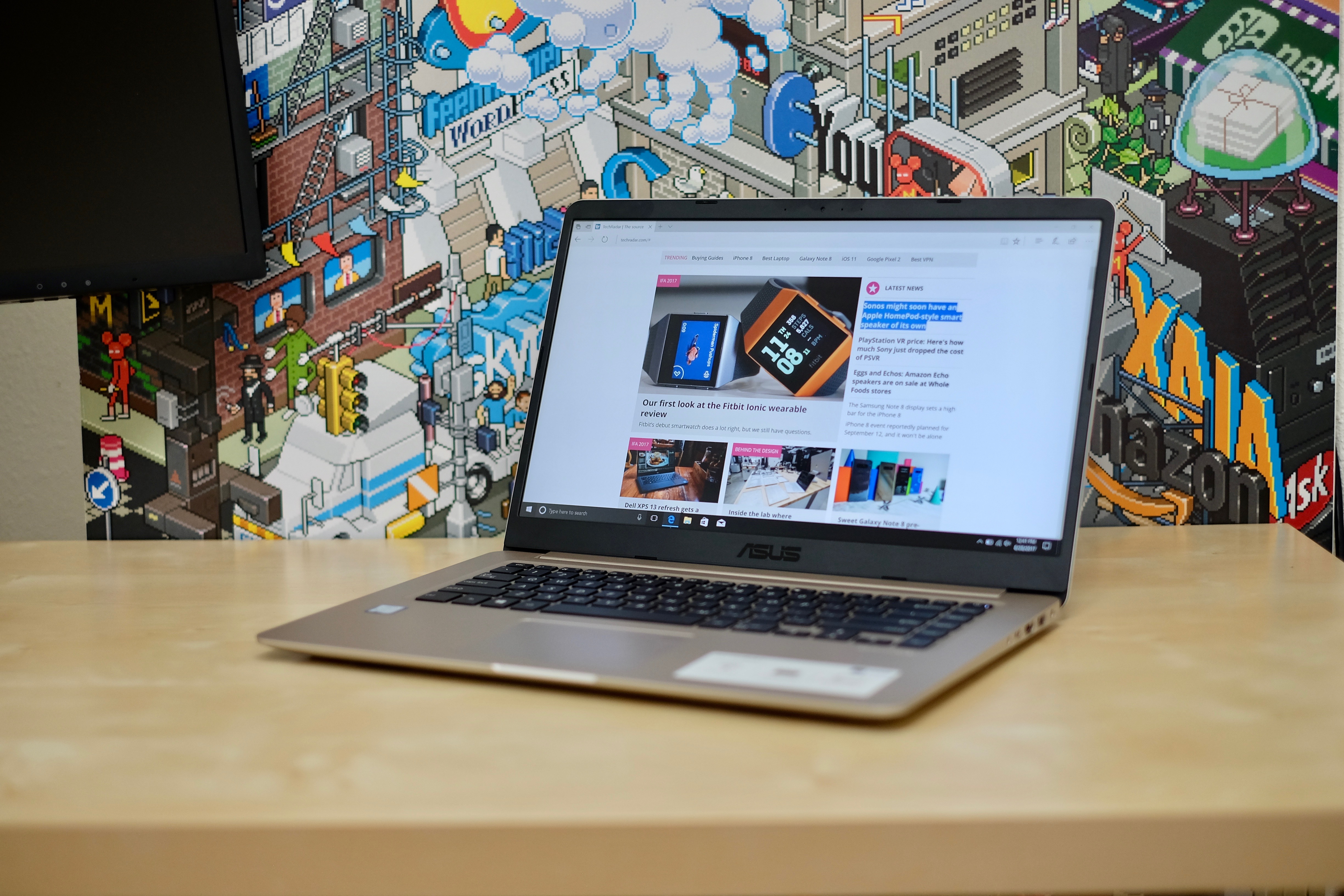TechRadar Verdict
This Asus VivoBook S is an affordable laptop that doesn’t stand out from the crowd, yet still hits all the marks.
Pros
- +
Solid performance
- +
Sturdy build quality
Cons
- -
Fingerprint sensor placement
- -
Finicky touchpad
- -
‘Meh’ battery life
Why you can trust TechRadar
With a starting price of $799 (about £617, AU$1,002), the Asus VivoBook S510U is one of the moderately-priced Asus laptops that are sure to attract attention from students and the casual user. It’s powerful and has a large display, yet is still portable enough to tote around in a backpack.
Since its launch, and especially around Black Friday, the Asus VivoBook S510U has seen some impressive price cuts, which makes this an even more tempting purchase. However, even with the price cuts, make sure you read on in this review to find out what we think of the laptop.
We spent a week putting it through our benchmark tests as well as using it for work and play. The Asus VivoBook S510U spec sheet hits all the right notes, but at the end of the day, real world use tells a slightly different story, but a happy one nonetheless.
Here is the Asus VivoBook S510U configuration sent to TechRadar for review:
CPU: 2.9GHz Intel Core i7-7500U (dual-core, 4MB cache, up to 3.5GHz)
Graphics: Intel HD Graphics 620
RAM: 8GB DDR4
Screen: 15.6-inch FHD (1,920 x 1,080) with 178-degree wide-angle viewing
Storage: 1TB hard drive; 128GB SSD (SATA 3)
Ports: 1 x USB 3.1 USB-C, 1 x USB 3.1, 2 x USB 2.0, 1 x audio combo jack, 1 x HDMI, 1 x SD card reader
Connectivity: 2 x 2 dual-band 802.11ac Wi-Fi; Bluetooth 4.2
Camera: VGA (640 x 480) webcam
Weight: 3.3 pounds (1.5kg)
Size: 14.23 x 9.59 x 0.7 inches (36.14 x 24.35 x 1.78cm; W x D x H)
Price and availability
This particular model is available in the US for $799 (about £617, AU$1,002), with the same configuration we tested for this review. In the UK and Australia, however, Asus only lists more robust variants of the VivoBook S, with specifications more in line with gaming laptops than the everyday computer we tested. Pricing for the VivoBook S15 models listed in the respective countries wasn’t available at time of writing.
In the US, Newegg has numerous configurations of the VivoBook S ranging from the model we tested to a model with a 2TB SSD and 32GB of memory for $1,836.
At this price, the VivoBook S compares favorably against the Dell XPS 13. With the same processor, GPU and RAM, the VivoBook has more storage (256GB SSD on XPS 13), but lacks the UHD display of the XPS 13. A larger display and lack of a few extra pixels, for some, is a fair tradeoff for the amount of storage gained.
Within the same ballpark price, Microsoft’s Surface Laptop gains a touchscreen, a 720p webcam, and a smaller design when compared to the VivoBook S. As with the XPS 13, however, you’re going to give up storage space, with the entry Surface Laptop housing a 256GB SSD.
As we mentioned previously, the Asus VivoBook S510U has seen a number of impressive price cuts since its launch, making it an even better value for money preposition.
Design
The plastic base of the VivoBook S is a mirage. Its brushed finish gives the impression it’s a metal housing from afar. It’s only after you pay closer attention do you realize the optical illusion, designed to match the aluminum lid that protects the display when the lid is closed.
The slight taper from the hinge to the front of the housing is reminiscent of the MacBook Air, albeit on a larger scale. Weighing in at 3.3 pounds (1.5kg), the VivoBook S is slightly heavier than the XPS 13 (2.9 pounds or 1.29kg), but that’s expected due to the difference in size.
Overall, there’s solid feel to the build quality, as if it can withstand an accidental drop off your desk – though, we don’t suggest you try it. And, with the combination of plastic and aluminum that looks nearly identical, Asus is able keep the VivoBook S at an affordable price point without sacrificing looks.

Ports for days
With a fair amount of ports decorating either side of the VivoBook S, you’re unlikely to run out of spots to plug in accessories.
The left side is where you’ll find both USB 2.0 ports and a standard SD card reader.
On the opposite side is the 3.5mm audio jack, a lone USB C port, full-size HDMI, a USB 3.1 port, and the DC charging port.
Bezel is officially a buzzword
Surrounding the 15.6-inch, FHD display is a narrow bezel, measuring just 7.8mm. Asus’s official marketing term for this bezel is “NanoEdge” and yes, it looks that way, but we aren’t sure it’s a huge selling point.
Of course, by shrinking the bezels, Asus can reduce the overall size of the VivoBook S, like Dell’s InfinityEdge displays, but the difference isn’t enough to warrant us suggesting you limit yourself to only NanoEdge bezels.

Fingerprint reader placement
As with the Asus Zenbook 3, the fingerprint reader is located in the top-right corner of the trackpad. Fortunately, on the VivoBook S it’s tucked further into the corner than it is on the Zenbook 3.
The slight change in position makes it easier to use the pad without the reader interrupting gestures or swipes. We’d still prefer not to have a fingerprint sensor included within the trackpad, but we’ll settle for the improvement.
- Check out our Asus coupon codes for the latest savings and deals.
